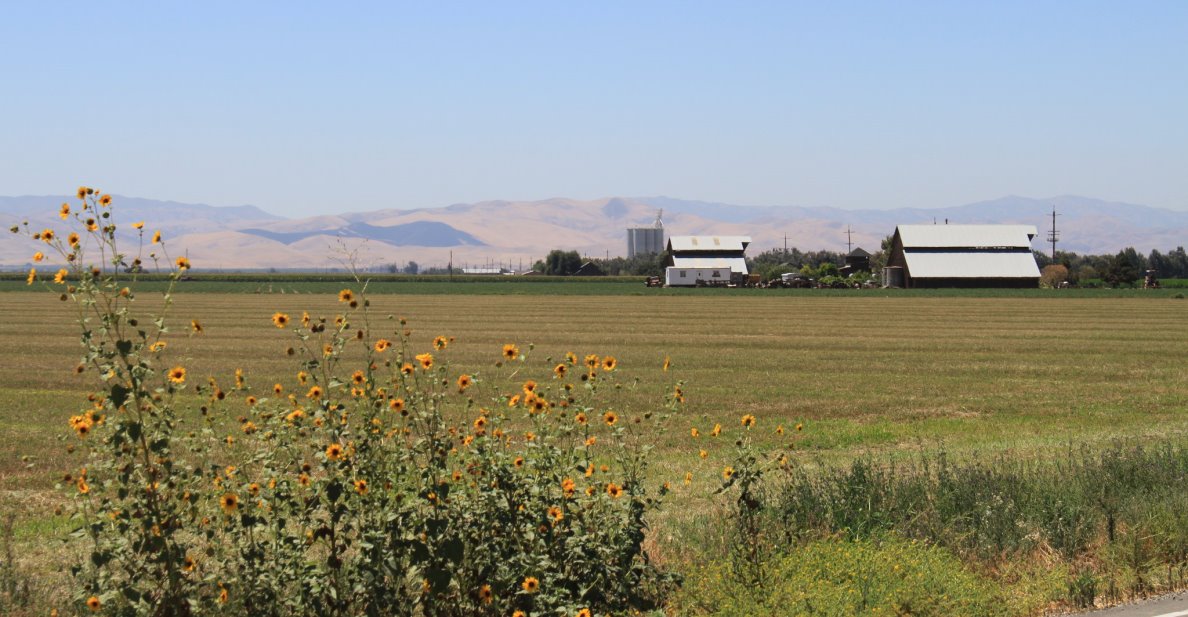
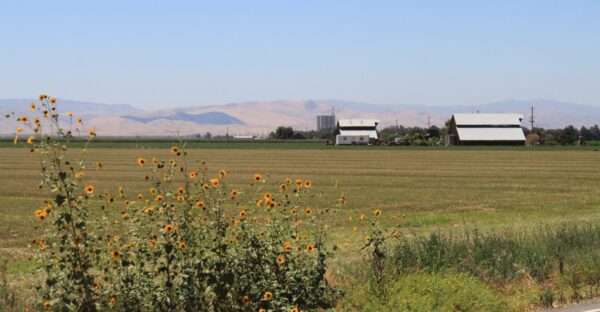 From the Public Policy Institute of California:
From the Public Policy Institute of California:
As implementation of the Sustainable Groundwater Management Act (SGMA) gets underway, questions are emerging about what it will mean for lands protected under the Williamson Act, California’s chief farmland preservation policy. For nearly 60 years, the Williamson Act has helped protect 16 million acres—roughly half of the state’s crop- and rangelands—from development.
But as SGMA’s limitations on groundwater extraction go into effect—and as warmer, more intense droughts begin to push land out of irrigation–the context within which the program operates is shifting. In July, we gathered a group of agriculture, solar, and county stakeholders to explore the interplay between the Williamson Act and SGMA in the San Joaquin Valley. Here is what we learned.
Click here to read more from the Public Policy Institute of California.
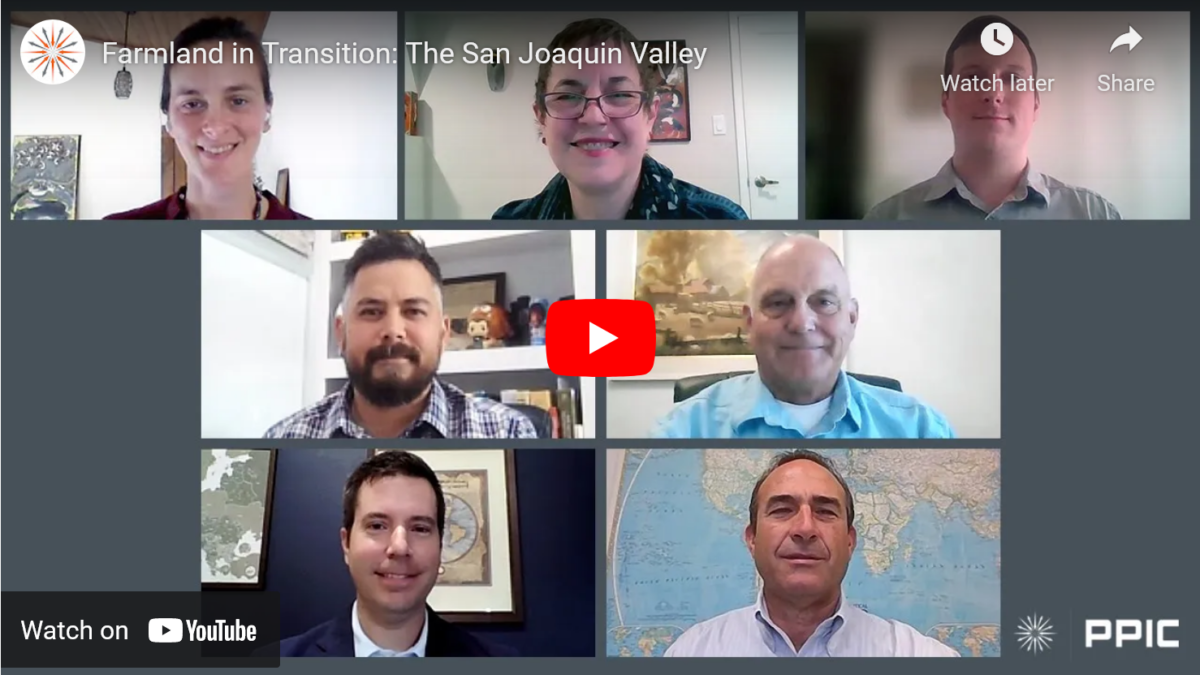
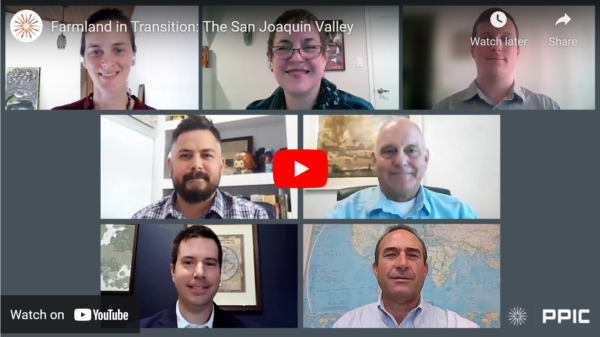 The San Joaquin Valley is California’s agricultural heartland and at the center of the state’s water challenges. As the region brings its groundwater basins into balance under the Sustainable Groundwater Management Act (SGMA), over half a million acres of irrigated farmland may need to come out of production.
The San Joaquin Valley is California’s agricultural heartland and at the center of the state’s water challenges. As the region brings its groundwater basins into balance under the Sustainable Groundwater Management Act (SGMA), over half a million acres of irrigated farmland may need to come out of production.
At a virtual event last week, PPIC researchers and a panel of local experts moderated by Ellen Hanak, director of the PPIC Water Policy Center, discussed how to manage this massive transition while reaping the greatest benefits from idled land and mitigating air quality concerns.
Watch video and read summary from the PPIC by clicking here.
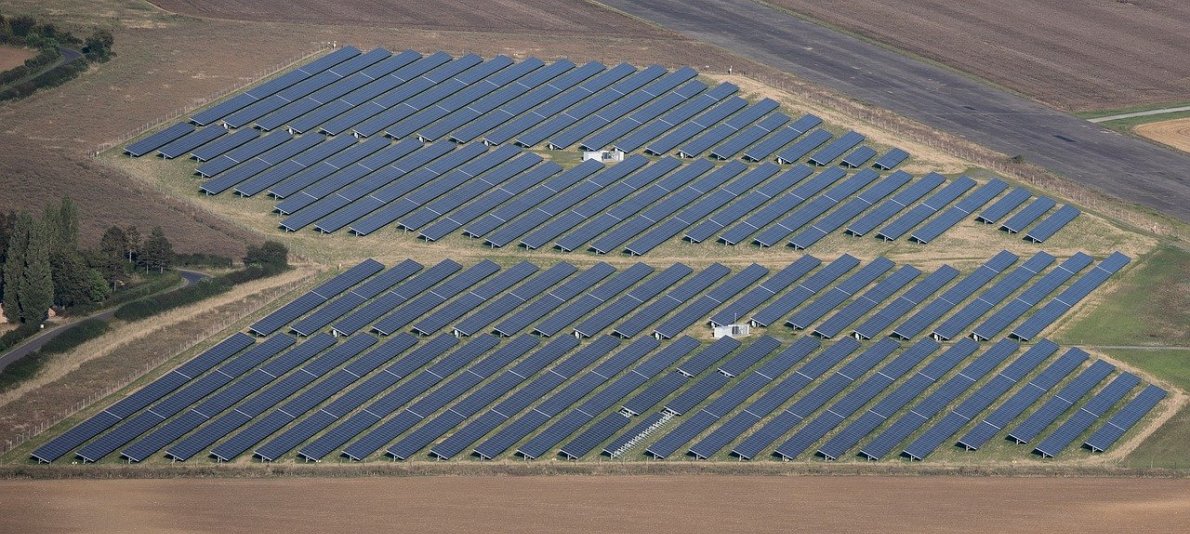
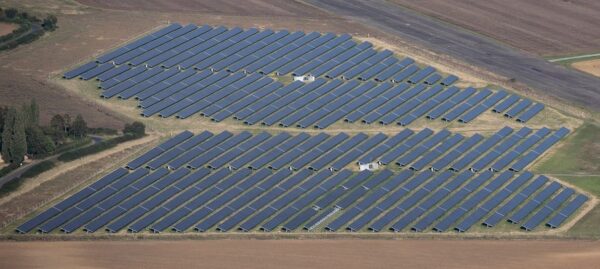 The San Joaquin Valley is facing a monumental shift in land use over the next two decades. Two important but seemingly unrelated laws are driving the change: the 2014 Sustainable Groundwater Management Act (SGMA), which aims to bring groundwater basins into balance by the early 2040s, and SB 100, which intends to help California achieve 100% clean power statewide by 2045.
The San Joaquin Valley is facing a monumental shift in land use over the next two decades. Two important but seemingly unrelated laws are driving the change: the 2014 Sustainable Groundwater Management Act (SGMA), which aims to bring groundwater basins into balance by the early 2040s, and SB 100, which intends to help California achieve 100% clean power statewide by 2045.
SGMA may require fallowing at least 500,000 acres of cropland in the San Joaquin Valley (10%) by 2040. A significant expansion of solar energy production to meet SB 100 goals, on the other hand, will demand a large amount of land. Promoting solar expansion on fallowed farmland in the San Joaquin Valley could support two major objectives at once: supporting the state’s clean energy goals while easing the economic pain of transitioning some land away from agriculture.
Click here to read more from the PPIC.

Bringing the San Joaquin Valley’s groundwater basins into balance by the early 2040s is going to be challenging, but two neighboring groundwater sustainability agencies (GSAs) in Madera County are collaborating to move the process forward.
The PPIC spoke with one engineering consultant and one general manager—Joe Hopkins of Aliso Water District Groundwater Sustainability Agency and Sarah Woolf of the Triangle T Water District—to hear about their agencies’ efforts to comply with the 2014 Sustainable Groundwater Management Act (SGMA).
Click here to read this article from the PPIC.
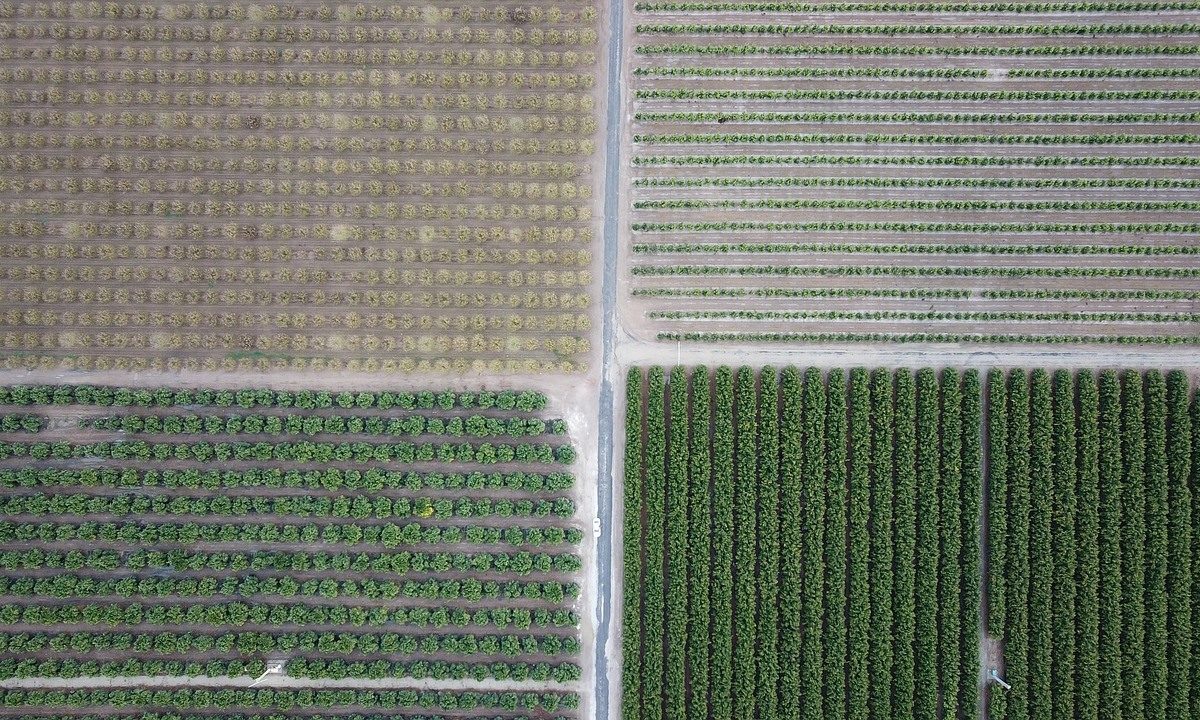
How Water Trading and Banking Can Support Groundwater Management
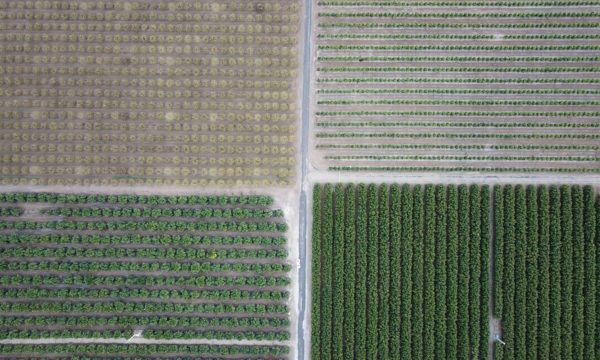 The Sustainable Groundwater Management Act mandates that local groundwater users bring their groundwater basins into balance by the 2040s, a process that will ultimately help individual users and their communities build resilience in an era of climate change.
The Sustainable Groundwater Management Act mandates that local groundwater users bring their groundwater basins into balance by the 2040s, a process that will ultimately help individual users and their communities build resilience in an era of climate change.
As groundwater sustainability agencies and others face a future of pumping reductions and subsequent land fallowing, water banking and water trading may prove important tools to help manage this transition.
However, a combination of aging infrastructure and complex, conflicting regulatory structures currently hinders the expansion of banking and trading. Multiple actors can drive reforms to streamline these practices.

From the PPIC:
Water marketing is an important tool for managing scarce supplies.
-
- In California’s water market, buyers and sellers trade water through short- and long-term leases as well as permanent sales of their water rights. Trading enhances flexibility in water management.
- Short-term transfers lessen the economic impact of shortages during droughts by shifting water to activities and places where the lack of water will be more costly. Long-term and permanent transfers accommodate geographic shifts in water demand as the economy changes and the population grows.
- Today, most trading involves surface water. Some groundwater trading occurs within specially managed basins; this is likely to expand as groundwater users in other basins implement the Sustainable Groundwater Management Act (SGMA).
Click here to read/download the full fact sheet. También disponible en español.
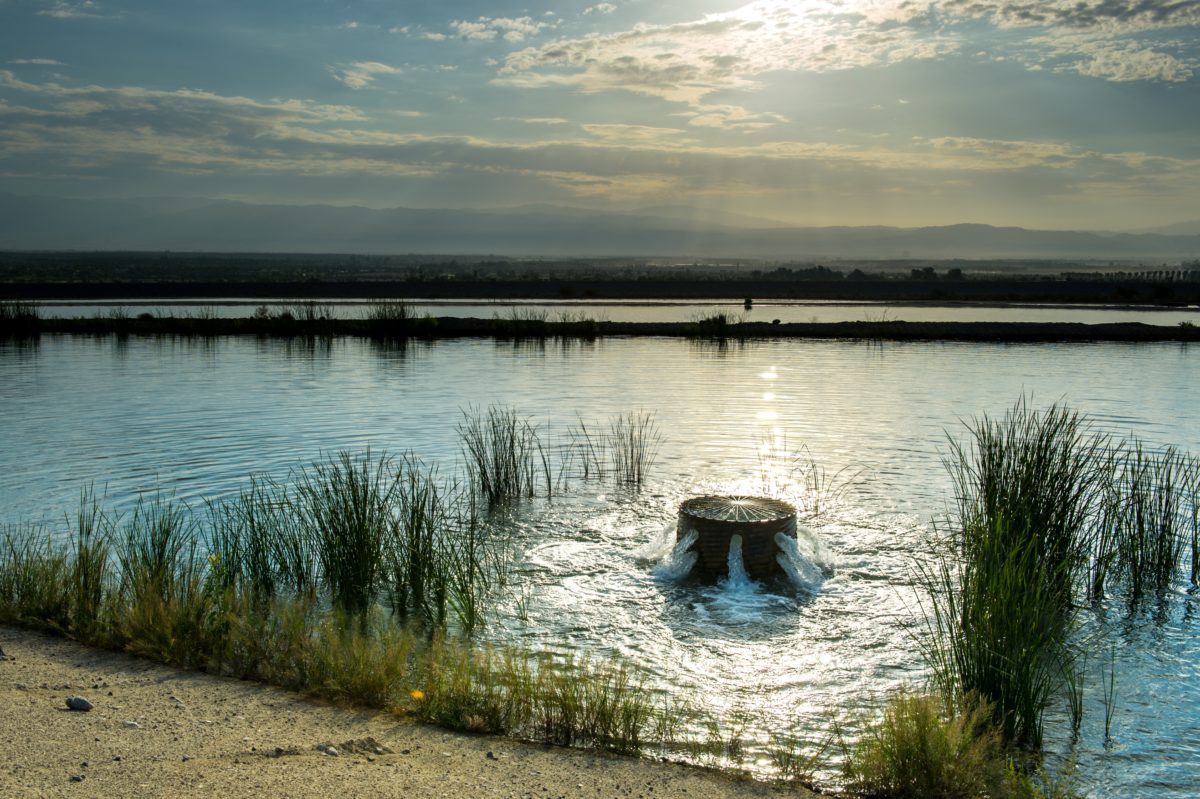
Groundwater recharge is an important water management practice in California.
-
- Recharge occurs when water seeps into the ground to replenish underground aquifers. Although some recharge happens incidentally—water flowing into the ground from rivers, unlined canals, or excess irrigation—intentional recharge can restore groundwater levels and store water for later use.
- In coastal areas, intentional recharge prevents salty ocean water from entering freshwater aquifers. Recharge can also help prevent impacts from groundwater pumping, such as dry wells or sinking lands, while providing wetland habitat for birds, reducing flood risk, and storing water for droughts.
- Active recharge is a longstanding practice in much of urban Southern California and parts of the Bay Area, Central Coast, and Central Valley.
Click here to view/download fact sheet. También disponible en español.
From the Public Policy Institute of California (PPIC):
 “The San Joaquin Valley has begun to grapple with implementing the Sustainable Groundwater Management Act (SGMA). Figuring out the math of balancing water supply and demand in ways that cause the least economic harm to farmers and local economies is challenging, and difficult tradeoffs are inevitable. We talked with Emmy Cattani, a fifth-generation farmer from Kern County, about some options.
“The San Joaquin Valley has begun to grapple with implementing the Sustainable Groundwater Management Act (SGMA). Figuring out the math of balancing water supply and demand in ways that cause the least economic harm to farmers and local economies is challenging, and difficult tradeoffs are inevitable. We talked with Emmy Cattani, a fifth-generation farmer from Kern County, about some options.
PPIC: Talk about ways that agriculture can reduce land fallowing in implementing SGMA.
EMMY CATTANI: More supply is critical. The biggest opportunity is to figure out how to capture water in big flood events, which are expected to become more common with climate change. … ”
Continue reading at the PPIC here: Finding a balance between supply and demand to get to groundwater sustainability
From the Public Policy Institute of California:
Over-pumping of groundwater has caused domestic wells to go dry in the San Joaquin Valley. Yet many of the first round of plans prepared to comply with the Sustainable Groundwater Management Act (SGMA) do not yet propose ways to address this problem. We explored groundwater planning with three members of the environmental justice community—Angela Islas of Self-Help Enterprises, Justine Massey of the Community Water Center, and Amanda Monaco of the Leadership Counsel for Justice and Accountability.
Click here to read this article.
 Ellen Hanak and Jelena Jezdimirovic write:
Ellen Hanak and Jelena Jezdimirovic write:
In these extraordinary times, managing groundwater for long-term sustainability may not seem like a top priority. But in the San Joaquin Valley—where groundwater supplies have been declining for decades—excess pumping is a critical problem, with major implications for public health, jobs, the environment, and local economies.
The state’s Sustainable Groundwater Management Act (SGMA) requires groundwater planning and actions to sustain this vital resource. Agencies from California’s 21 “critically overdrafted” basins—including 11 large basins that span most of the San Joaquin Valley floor—submitted their first groundwater plans in January.
As part of our long-term work to build shared understanding of water challenges and solutions in the valley, the Public Policy Institute of California reviewed the 36 plans developed for these basins to see how well they tackle some key issues.
Click here to continue reading at the PPIC.
 From the Public Policy Institute of California:
From the Public Policy Institute of California:











